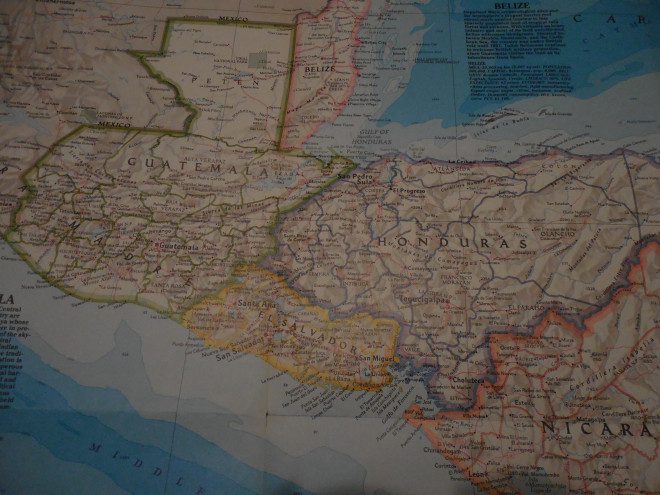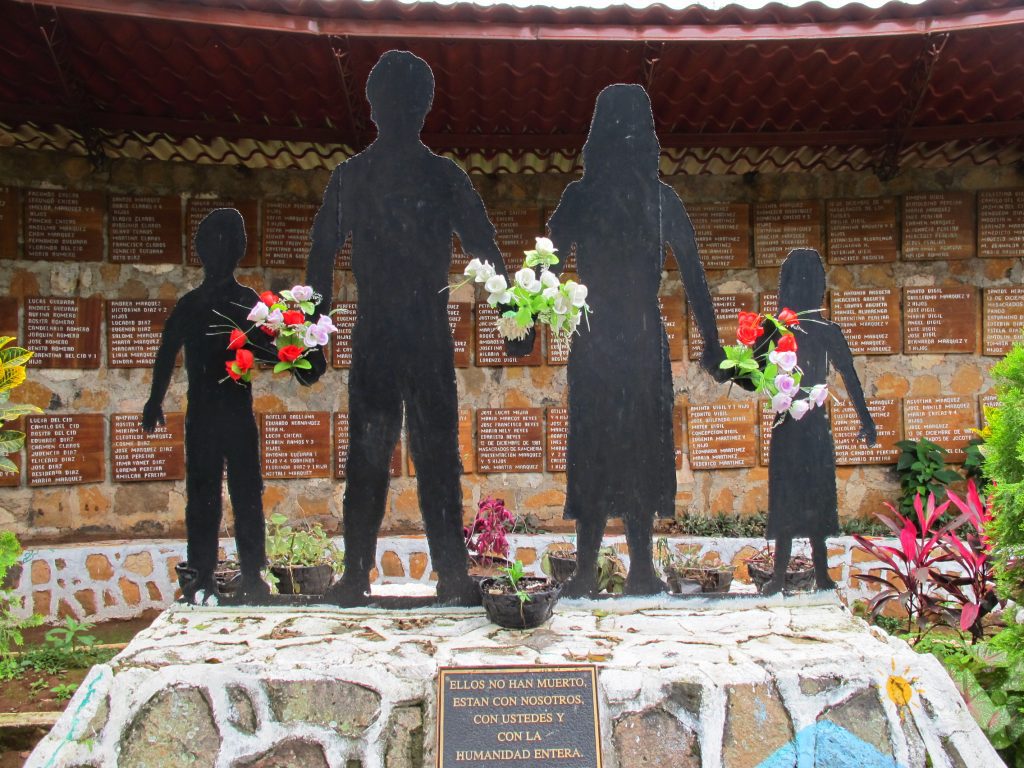I determined I had to witness it for myself – and to bring those lessons back to my community.
For over a decade, I traveled in those countries. When I had the money, I would return to learn more about the pueblos’ experiences, their histories and cultures. I documented what I was taught in poetry and travelogues.

Since the mid-19th century, the United States has intervened over 100 times in Latin America’s affairs, installing governments that would protect its interests – especially economic and those of US corporations in the region. These interventions continue to this millennium, with such actions as those of the ouster of the democratically elected Honduran president in 2009. There are many other factors (such as the US market for drugs) that add to the region’s instability.
This is not meant to be a political piece. It is intended to share the lessons Guatemalans, Salvadorans, Hondurans and Nicaraguans taught me. I have penned dozens upon dozens of works – but today, I shall share only a couple with you.
I now invite you to join me on a journey through the history and lives of the people of Central America. We begin with a visit to Guatemala, and continue on to El Salvador. Then continue along with me at Latin America Wanderer.
Safe Journeys!
My first journeys to Guatemala were when the Civil War was still raging there. Some nights, I would listen to the rocket fire in the hills surrounded the villages. I spent several spells in San Juan Cotzal, Nebaj and Chajul, the three main villages of the Ixil Triangle, deep in the Cuchumatanes Mountains of Guatemala. This was one of the hardest-hit areas of the country during its 35-year Civil War. The atrocities committed by the US-backed governments and their paramilitary groups were astounding. I spent many evenings in shuttered rooms, away from earshot of others, listening to the testimonies of those who lived through – and survived – those horrors.
SILENT COURAGE
San Juan Cotzal
The Saturday market streets are full of the
bargaining for housewares & chickens
in the sh-shs & clicks of Ixil
I wind past the crowded stalls to the church
Stone dust drifts through the nave
from a scaffold in the apse
It glitters in the filtered sunlight
On the left wall, Christ slumps upon a large crucifix
Small even-armed wooden crosses surround him,
names engraved of those victims
of the government abuses here
the disappeared, the kidnapped
the tortured, the assassinated
I sit on a nearby bench
studying their lives
Seventeen years of documentation
from 1974 to 91
many from 80, 81, 82
The clang of hammer upon rock
reverberates through this sanctuary
I mentally count the crosses, row upon row
like a halo around the Savior
Now & again I look furtively over to those workers
One, two, three hundred
four hundred & seventy four
crosses 474 lives 474
victims martyrs
474 deaths
published in :
In Protest: 150 Poems for Human Rights (London, UK: Human Rights Consortium of the School of Advanced Study, University of London, October 2013)
During my first trip to El Salvador shortly after the peace accords were signed, I spent time in Morazán Department. I interviewed people in several villages – including Perquín, Segundo Montes and, yes, El Mozote – about their experiences during the civil war.
I was one of the first to reveal that El Mozote was being repopulated. In fact, I arrived on foot to that village just as the returnees were cleaning the ruins, to begin anew.
This is the poem I was compelled to write at that moment, sitting in the scant shade of the silhouette statue.
NUNCA MÁS
A village deserted for so long
after such a horror:
Battalion Atlacatl, armed & trained in
torture & so-called low-intensity warfare
by the US of A, killed 1000 people here &
in neighboring villages in Operación
Rescate
One December night in ’81, the soldiers arrived and stayed.
The people of the village were forbidden to leave their homes.
The next morning, the soldiers gathered the people:
the men in one place…
the women in another…
the children in the convent.
First they interrogated / tortured / shot the men…
then they shot the women…
then the children…
The soldiers left their boasts on the walls of the now-empty homes
& laid torch to it all.
The campesinos & guerrilleros near saw the columns of smoke arising.
Some had heard the shots & shouts, the screams.
When they arrived all that was left was the bodies of 1000 people
being eaten by buzzards & dogs.
And now the air is disturbed
only by a slight breeze through the long-needled pines.
A silhouette sculpture of a family
man / woman / children holding hands
stands in the center of the village.
Roofless buildings – some with bullet & shell holes,
all with charred beams.
And from these ashes, from the debris of fallen roof tiles
you, the few survivors of that massacre
only six, with your new families]
arise like a Phoenix
to rebuild your homes & your community
still called El Mozote.
published in :
Red River Review (August 2001)
